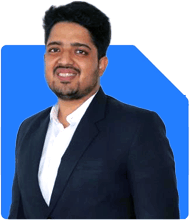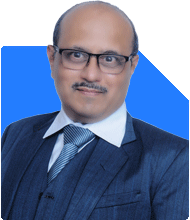31 YO Investing 15,000/Month: Market-Linked Policy, SIP, or Other?
Ramalingam Kalirajan |10906 Answers |Ask -Follow
Mutual Funds, Financial Planning Expert - Answered on Oct 15, 2024
He has an MBA in finance from the University of Madras and is a certified financial planner.
He is the director and chief financial planner at Holistic Investment, a Chennai-based firm that offers financial planning and wealth management advice.... more

Hi sir I am 31 I want to invest 15000rs / per month can you suggest me market linked policy or sip is better to invest or is there any other way for 25years I want amount in 2crores
When we consider the investment options between a market-linked insurance policy and a Systematic Investment Plan (SIP), there are several factors to evaluate. Each has its own strengths and weaknesses, but let’s break it down in detail.
Understanding Market-Linked Insurance Policies
Market-linked insurance policies like ULIPs (Unit Linked Insurance Plans) are insurance-cum-investment products. While they offer both market exposure and life cover, there are key things to note:
Insurance and Investment Combined: A ULIP offers life insurance and market-linked returns. However, due to this dual nature, you may face high fees.
Higher Costs: The charges in ULIPs are often higher. These include premium allocation charges, mortality charges, and fund management fees. These reduce your investible amount, affecting long-term returns.
Complex Structure: Since a portion goes towards insurance, the investment component may be lower. This makes it harder to track and evaluate returns clearly compared to a simple investment product.
Lock-in Period: ULIPs come with a mandatory lock-in of 5 years. However, exiting early could lead to penalties, which might affect your flexibility.
If your goal is purely to grow wealth and achieve Rs 2 crore over 25 years, ULIPs may not be the best option due to the high costs and complex nature.
Exploring SIPs (Systematic Investment Plans)
On the other hand, investing in SIPs through mutual funds is a transparent and flexible approach. SIPs provide an opportunity to invest a fixed sum regularly into market-linked instruments, generally equity or debt funds.
Lower Costs: SIPs in mutual funds have significantly lower costs compared to ULIPs. You only pay an expense ratio, which is reasonable for actively managed funds.
Flexibility: You can stop, increase, or decrease your SIPs anytime. This gives you more control over your financial strategy.
No Insurance Component: SIPs focus purely on wealth accumulation, unlike ULIPs that mix insurance and investment. You can buy a separate term insurance policy for life cover at a much lower cost than what ULIPs offer.
Power of Compounding: With consistent SIPs in equity mutual funds, you benefit from the power of compounding. Over 25 years, this could help you reach your goal of Rs 2 crore.
The Disadvantages of Index Funds
Though index funds are a popular investment option, they might not align perfectly with your long-term goal.
No Active Management: Index funds are passively managed, meaning they simply track a market index like Nifty or Sensex. This limits the scope for better returns through stock selection.
Lower Flexibility: Actively managed funds have the advantage of adjusting the portfolio based on market conditions. An index fund cannot do that, limiting your ability to outperform the market during favorable times.
The Benefits of Actively Managed Funds
Instead of opting for passive index funds, investing through a regular plan in actively managed funds via a Certified Financial Planner (CFP) could give you an edge. Here’s why:
Expert Management: A fund manager makes decisions based on market analysis and economic conditions. This could result in better returns over time, especially in a long-term investment like yours.
Diversification: Actively managed funds offer diversification across sectors and industries, spreading your risk while enhancing potential returns.
Goal-Oriented Strategy: A CFP can help you select the right funds based on your time horizon, risk profile, and financial goals.
The Disadvantages of Direct Funds
Many investors get attracted to direct mutual fund schemes due to the slightly lower expense ratio. However, this option might not always be the best:
Lack of Guidance: In direct funds, you don’t have the expert advice of a CFP. Without proper guidance, you could miss out on strategic fund selection or portfolio management.
Emotional Investing: With direct funds, the risk of making emotional investment decisions increases, as you’re more involved in the process without expert advice.
It is always beneficial to invest through regular funds with the help of a CFP, who can guide you with a disciplined approach to wealth creation.
Suggested Strategy for Rs 2 Crore Target
If your goal is to accumulate Rs 2 crore in 25 years, SIPs in equity mutual funds will be a much better option than a market-linked insurance policy. Here’s how you can approach it:
Focus on Equity: For such a long horizon, invest a major portion (around 70-80%) in equity mutual funds. Equities offer higher growth potential over the long term compared to other asset classes.
Diversify: Consider diversifying across large-cap, mid-cap, and small-cap funds to balance growth and stability. This ensures that you capture market growth in different segments.
Increase Your SIP Gradually: Start with Rs 15,000 per month and increase it every year, even by Rs 1,000. This will help you boost your investment over time, benefitting from the power of compounding.
Monitor Performance: While SIPs work well in the long term, review your portfolio regularly with the help of a CFP. This helps in making necessary adjustments based on market performance.
Importance of Life Insurance
Since you are considering market-linked policies, it is important to note that if you are opting for SIPs, you still need life insurance.
Get a Term Insurance: A term insurance plan will provide adequate life cover at a low premium. It is the best option to protect your family in case of any unforeseen circumstances.
Separate Investment and Insurance: Keep your investment and insurance needs separate for better control and returns. Focus on wealth-building through SIPs and protection through term insurance.
Final Insights
Considering your goal to accumulate Rs 2 crore over the next 25 years, SIPs in equity mutual funds offer a transparent, cost-effective, and growth-oriented solution. Avoid market-linked policies due to their high charges and complex structure.
Focus on regularly investing through a combination of large-cap, mid-cap, and small-cap funds. This diversified approach will help you achieve your goal with controlled risk. Keep insurance and investment separate, opting for a simple term plan for life cover.
Review your portfolio with a Certified Financial Planner, who can guide you in making the right choices and staying on track for your financial goals. With consistency, discipline, and strategic planning, you can comfortably reach your target.
Best Regards,
K. Ramalingam, MBA, CFP,
Chief Financial Planner,
www.holisticinvestment.in
https://www.youtube.com/@HolisticInvestment
You may like to see similar questions and answers below
Nikunj Saraf | Answer |Ask -Follow
Mutual Funds Expert - Answered on Feb 16, 2023
Ramalingam Kalirajan |10906 Answers |Ask -Follow
Mutual Funds, Financial Planning Expert - Answered on Sep 16, 2024
Ramalingam Kalirajan |10906 Answers |Ask -Follow
Mutual Funds, Financial Planning Expert - Answered on Oct 24, 2024
Nitin Narkhede |113 Answers |Ask -Follow
MF, PF Expert - Answered on Oct 25, 2024
Ramalingam Kalirajan |10906 Answers |Ask -Follow
Mutual Funds, Financial Planning Expert - Answered on Dec 18, 2024
Ramalingam Kalirajan |10906 Answers |Ask -Follow
Mutual Funds, Financial Planning Expert - Answered on Jun 14, 2025
Ramalingam Kalirajan |10906 Answers |Ask -Follow
Mutual Funds, Financial Planning Expert - Answered on Dec 19, 2025
Nayagam P P |10859 Answers |Ask -Follow
Career Counsellor - Answered on Dec 19, 2025
Ramalingam Kalirajan |10906 Answers |Ask -Follow
Mutual Funds, Financial Planning Expert - Answered on Dec 19, 2025
Ramalingam Kalirajan |10906 Answers |Ask -Follow
Mutual Funds, Financial Planning Expert - Answered on Dec 19, 2025
Ramalingam Kalirajan |10906 Answers |Ask -Follow
Mutual Funds, Financial Planning Expert - Answered on Dec 19, 2025
Radheshyam Zanwar |6751 Answers |Ask -Follow
MHT-CET, IIT-JEE, NEET-UG Expert - Answered on Dec 19, 2025
Radheshyam Zanwar |6751 Answers |Ask -Follow
MHT-CET, IIT-JEE, NEET-UG Expert - Answered on Dec 19, 2025
Samraat Jadhav |2514 Answers |Ask -Follow
Stock Market Expert - Answered on Dec 18, 2025
Reetika Sharma |432 Answers |Ask -Follow
Financial Planner, MF and Insurance Expert - Answered on Dec 18, 2025
Reetika Sharma |432 Answers |Ask -Follow
Financial Planner, MF and Insurance Expert - Answered on Dec 18, 2025



























